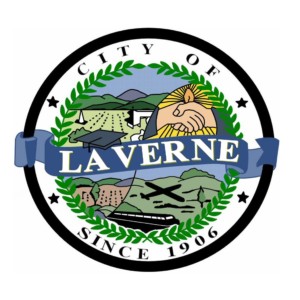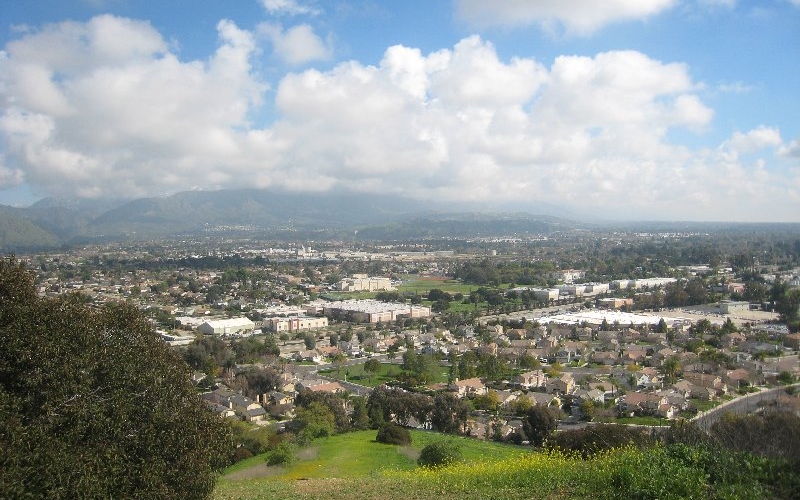 The recent increase in construction activities related to the Glendora to Pomona project segment of the Foothill Gold Line (also known as the L Line) is an exciting reminder of and glimpse into the City of La Verne’s future near the planned Gold Line station. The extension of the light rail line will support the projected population and employment opportunities growth in the region, which will also be complemented by the City’s Old Town La Verne Specific Plan.
The recent increase in construction activities related to the Glendora to Pomona project segment of the Foothill Gold Line (also known as the L Line) is an exciting reminder of and glimpse into the City of La Verne’s future near the planned Gold Line station. The extension of the light rail line will support the projected population and employment opportunities growth in the region, which will also be complemented by the City’s Old Town La Verne Specific Plan.
To accelerate funding for the public improvements needed to accommodate and attract the development that is envisioned in the Old Town La Verne Specific Plan, the City of La Verne Enhanced Infrastructure Financing District #1 (District) was established. The District is generally bounded by the southern city limits, White Avenue to the east, the alley north of First Street to the north and E Street to the west.
Enhanced Infrastructure Financing Districts, commonly referred to as EIFDs, are formed to provide local jurisdictions with a mechanism to fund construction and rehabilitation of public infrastructure projects using tax increment financing (TIF). The establishment of the EIFD will not result in any new taxes or fees to the property owners. Instead, the property tax increment – the amount above the property taxes collected in the base year (2017/2018) – that the City and County receives from the designated project area (the District) would be specifically restricted to pay for the 14 identified infrastructure projects listed in the Infrastructure Financing Plan (IFP) at an estimated cost of $33 million.
While the overarching purpose of La Verne’s District is to create a mechanism to fund the improvements necessary to accommodate Transportation Oriented Development (TOD) in the corridor of the Gold Line rail system, there are three specific goals in which those efforts are categorized:
- Physical and Aesthetic Improvements: Arrow Highway is the major arterial serving the area. A primary objective is to improve the streetscape, medians, walkability of sidewalks and enhancements to bikeways, contributing toward greenhouse gas reduction goals. Additionally, the physical and aesthetic improvements are expected to increase marketability and interest in the area to potential developers.
- Enhancing of Connectivity: The District will facilitate improvements that will promote accessibility between the Old Town and University of La Verne that is user friendly and inviting. It will also provide convenient connections to major employers, institutions and regional County assets including Gilead Sciences, Cal Poly Pomona, Metropolitan Water District, the Fairplex, Bracket Field and Frank G. Bonelli Regional Park. These destinations and their proximity to the future Gold Line Station were key reasons this location was selected. They are also an important “value added” part of any development in the area.
- Expansion of Utilities: Upgrades to existing underground utilities will improve level of service for existing residents in the area in addition to minimizing the burden from new future development. As specific projects are approved, certain utilities servicing the area will need to be upgraded to accommodate the higher levels of demand. The District will be utilized to fund those utility improvements listed within this plan in order to defray some of those costs.
Some of the specific infrastructure projects identified in the IFP that are either underway or will begin in the next few years include a new median along Arrow Highway, replacement of a 16” pipeline along E Street, new sewer line installation on First Street, traffic signal improvements on Wheeler Avenue and Arrow Highway, and new lighting and landscaping in the District area. Additional projects that will be addressed in the coming years include improvements for pedestrian movements from the station, vehicular movements to improve overall safety, and more.
The development that is expected to occur through this effort includes approximately 1,700 residential units, a 150-bed hotel, over 100,000 square feet of retail space and 150,000 square feet of Business Park. Fiscally, the resultant development will increase the productive use of a somewhat underserved and under-developed part of the City, which will provide the community with a higher property tax base, expanded revenues and increased employment opportunities.





